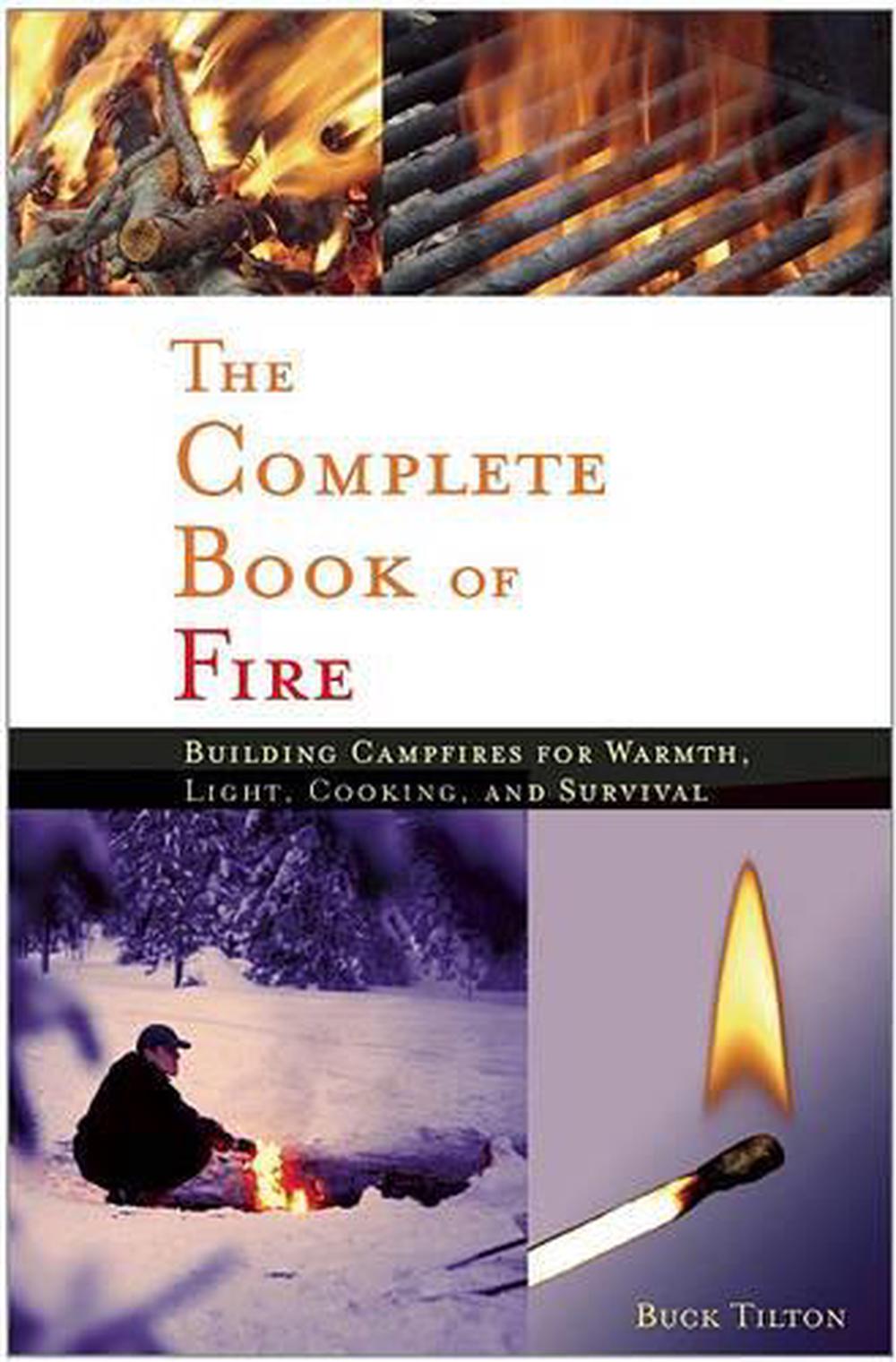
Complete Book of Fire
by Buck Tilton
This book teaches how to build, use, and extinguish campfires, whether for basic enjoyment or survival.
Paperback
English
Brand New
Publisher Description
To build a fire, feel heat, smell smoke, hear snaps and groans, watch flames dance, and gaze into glowing coals is the ultimate outdoor comfort. A campfire gives warmth, sheds light, dries Trade Trade Clothes, calms fears, and draws a day in the outdoors to a pleasant close. In addition to the comforts of a campfire, a life may often hang in the balance. When a campfire becomes a matter of life or death, there is no room for error. The Complete Book of Fire: Building Campfires for Cooking, Warmth, Light, and Survival provides the knowledge and fosters the confidence to successfully stay alive.
Author Biography
Outdoor expert Buck Tilton's respect and knowledge of our mountains, plains, and coastline are embodied in a lifetime of outdoor achievements, including winning the Paul Petzoldt Award for Excellence in Wilderness Education, co-founding the Wilderness Medicine Institute of NOLS, and authoring Leave No Trace's Master Educator Handbook. Buck also knows about fire first-hand. He's battled wild fires on the ground as a hotshot with the Unites States Forest Service and from the air as part of helicopter fire-attack crews. Buck lived in a cabin for 15 years, heated entirely by a wood-burning stove fed by wood that Buck himself cut, split, and stacked. In his lifetime outdoors, Buck has cooked with every conceivable type of stove, but hot coals and flame remain a favorite way to roast or bake a tasty open-air feast. An experienced author, more than 15 of Buck's books are currently in print, and he is a regular contributor to "Backpacker Magazine." Buck lives in Lander, Wyoming.
Table of Contents
IntroductionAbout the AuthorA Brief History of FireThe Making of FireAll About WoodTo Build—or Not to Build—a FireThe Survival FireThe Taste of FireWild FireThe Body BurnedCharred Bits and Flaming PiecesGlossaryResourcesIndex
Excerpt from Book
FIRE BUILDING: PART TWO Once your fire is up and going--the tinder consumed, the kindling ablaze, smaller fuel added and ignited--you can, and maybe have, maintained a fire by simply adding more and larger pieces of fuel. This usually works fine as long as you add fuel in a crisscross fashion to maintain an adequate air supply. The way you add larger fuel to a fire is sometimes called the lay of the fire, and different fire lays serve different needs. Some of the most common are presented here: A teepee fire, shaped like a teepee, sheds good light and concentrates the heat above the apex of the teepee, allowing you to boil water fast in a pot suspended over the apex. The teepee of fuel is most easily built if you push a stick into the ground securely, slanting it over the flames. Then lean a circle of sticks against the stick with its end buried in the ground. If a breeze is blowing, leave a "door" in the teepee on the windward side. Keep adding fuel to the teepee until your fire has reached the size you desire. On the down side, teepees tend to fall over eventually, but they are generally the easiest lay of fire to get going, and so they make great starter fires. A log cabin fire, shaped roughly like a tiny log cabin, creates great light and heat, largely because the fire gets a lot of oxygen. In a log cabin lay, the fuel is stacked like the walls of a cabin, with the interior space open for tinder, kindling, and small fuel. Because they burn hot, log cabin fires create a large bed of coals fairly quickly, a plus if you plan to cook on coals (see Chapter 7). Since they produce great light, log cabin fires also work well as signal fires (see Chapter 8). A pyramid fire looks similar to a log cabin fire except you build layers of fuel over the flames instead of a hollow framework with the fire inside. Each layer is a bit smaller than the previous layer, thus the pyramid shape. This construction has a couple of advantages: 1) the fire will burn a long time, a good thing if you want the light and heat for, say, an overnight flame, and 2) damper wood can be placed near the top, and the heat will dry it before you need it as fuel. A star fire looks sort of like a wheel without the rim. The fuel is the spokes of the wheel, and the fire burns at the hub. Star fires do not create a lot of light or heat, but they work fine when you don't need or want a large fire and/or when you need to conserve fuel. The pieces of fuel are pushed into the fire as the ends burn off, so a star fire requires almost constant attention.
Details

